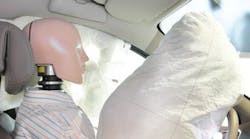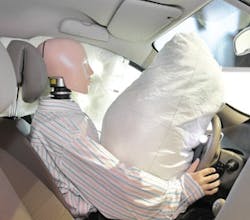Béla Lipták, PE, control consultant, is also editor of the Instrument Engineers' Handbook, and is seeking new co-authors for the coming new edition of that multi-volume work. He can be reached at [email protected].
Fifty years ago, process automation as a separate discipline didn't exist. I taught process control in the chemical engineering department of Yale University, and the first edition of the IEH came out of the electrical engineering division of its publisher. Why? Not because Yale or Chilton disliked our profession! They didn't know it existed! This has changed a lot.
The Present
Today in some industries, the roles have actually reversed. New developments in chemical or electrical engineering are relatively few, while the science of automation and process control is exploding. This increase is accelerated by the dropping cost of computer memory, by the standardization of protocols, by the ease of configuring complex algorithms and dynamic displays. This sudden rise in the recognition of our profession is due not only to the better tools at our disposal, but also to what we are doing with these tools.
It is now recognized that automation can simultaneously increase profitability and safety! No other profession can increase the GDP without building a single new plant. We can do that just by optimizing the existing plants. We can do that while also reducing pollution and energy consumption, solely through the application of state-of-the art automation. We can increase productivity without using a single pound of additional raw material and without spending a single additional BTU.
Safety
We can do that because, by replacing manual control with automatic, we maximize not only production but also safety. It is because delegating accident prevention to automatic systems increases safety, while delegating it to panicked, disgruntled or badly trained operators does not. For some, this change in the safety culture is hard to accept, and this group even includes some of our own older colleagues, who spent a lifetime designing manual or semi-automatic controls.
We now know, for example, that automatic flooding of the Fukushima reactors during the 45 minutes between the earthquake and the arrival of the tsunami could have prevented the meltdowns, and the automatic venting of hydrogen could have prevented the explosions. Similarly, lives would have been saved at the BP accident, if the platform was automatically disengaged from the well, or at the Asiatic jet accident, if landing was automatically aborted when the speed was manually allowed to drop below its safe limit. My purpose here is not to list cases, but to emphasize the need for changing the "safety culture" of our profession from manual to automatic.
Read Also: Automation Could Have Saved Fukushima
Automatic safety controls are the airbags of industry. The operator of the process doesn't need to actuate the safety controls, nor can he disable them, because the controls trigger the safety protection automatically when the situation requires it. In the coming age of cyber terrorism, the acceptance of this safety culture will be even more important.
IT and Automation
Figure 1: Automatic safety systems are the "airbags of industry."
Another major step in the right direction was the separation of information technology (IT) and process control. It took some time for industry to realize that IT has no safety culture; that nobody ever got killed by an office machine, unless it fell on them. Another cultural difference is that process control is continuous, while IT runs during daylight. Therefore, today we know that process data can flow from the process to the enterprise (IT), but direct queries from the enterprise to the process control system are absolutely unacceptable.Standardization
In the distant past, it took decades to standardize on the 3-to-15 PSIG (0.2 - 1.0 bar) pneumatic signal and years to standardize on the 4 to 20 mA DC electronic signal range. Everybody benefited from these standardizations because they allowed the products of different manufacturers to "talk" to each other.
Today, we work with microprocessor-operated intelligent field devices (IFDs), digital transmitters and digital valve actuators. They communicate digitally, and can handle multifunctions, such as detecting multiple variables, and simultaneously carrying out multiple tasks. Similarly, the valve actuators can have a variety of algorithms that can act as valve-opening sensors, limit switches or as remotely tuned PID algorithms.
Now the time is ripe to adopt a worldwide standard for a digital communication protocol, a standard that could link all the digital "black boxes," and could also act as a "translator" for those older instruments that were not designed for the digital age. Naturally, this standardization will allow the easy mixing of different manufacturers' products in our control systems.
A major step in this direction was taken in 2011, when the five major automation foundations agreed to unite around one protocol for field device integration (FDI). They agreed to combine their efforts, and form a joint company, FDI Cooperation. Its "board of managers" is composed of representatives of the five automation foundations and the managers of global automation equipment suppliers. (See "Swimming in the Alphabet Soup of Device Management").
We have good reason to hope that the FDI will finally end the Babel of communication protocols. When this materializes, the automation and process control engineers can once again concentrate on designing safe and optimized control systems, and stop wasting their time figuring out the communication among black boxes of the different suppliers.
Smart Instruments, Soft Sensors
Another step in the right direction is the availability of multiple sensor ranges, multiple references and the built-in intelligence serving to switch among them.
Sensor improvements also include the ability to switch between wired and wireless data transmission, providing both local and remote displays of both the real-time readings of variables and their past history, or providing self-diagnostics that signal the need for maintenance, recalibration or to report sensor failure.
Soft sensors are detectors that don't directly measure variables, but obtain measurements through the evaluation of other variables. For example, the mass of water in a boiler can be obtained indirectly on the basis of material balance between the water entering and the steam leaving. Similarly, outflow from a tank can be obtained from the rate of level change or from pump speed and pump power consumption. The mass flow of gases can be obtained from orifice ΔP, upstream pressure and gas temperature, or in custody transfer of oil, while mass flow can be obtained from volumetric flowmeters by using compensation algorithms for density.
Accuracy, Rangeability
It is also a major step forward that the best manufacturers now include the basis of their accuracy and rangeability statements in their specifications, and independent testing organizations, such as Evaluation International, are used to confirm them. The best manufacturers are also defining rangeability as the ratio between those maximum and minimum readings for which the claimed accuracy statement is still valid.
Similarly, nowadays the best control valve manufacturers' literature defines the rangeability of their valves as the range over which they guarantee that the specified valve characteristics are maintained within 25%. This is usually between 5% and 85% or so.
In short, there is no profession with a brighter future and a better ability to contribute to human progress than ours.






